Tree of Life Metepec The colored clay is called Pigmentado
Karina González and Edgar Salas Vasquez
Ceramics
Ht. 13″ x W. 11″ x D. 5″
Some form of the “tree of life” has been found in all Mesoamerican cultures including the Aztec, Maya, Mixtec, and Olmec, and continues to be a strong theme in Mexican folk art today. It is a symbol of the abundance of the universe, depicting the connection between heaven and earth and the unity and connection of everything in the universe. It reaches from the heavens – often with angels or some depiction of God at the top, to creation with Adam and Eve, to deep into the earth, depicted by gardens with deep roots, or sometimes as hell!
In contemporary Mexican folk art, the Tree of Life has become a kind of “canvas” for artists to present a variety of subjects, from daily life in the village, to indigenous dress and traditions, to folk art from all parts of Mexico. Many include religious themes such as the story of Adam and Eve or the Virgin of Guadalupe. This one is all about the Day of the Dead.
Trees of Life are made in many Mexican villages but perhaps most famously in Metepec and Izücar de Matamoros, Puebla.
Metepec trees of life are distinguished by the hundreds of dainty clay leaves and pedals that cover them, giving them an intricate, lush appearance. The tradition of trees of life there is said to have been started by Modesta Fernandez Mata, who began working in the distinctive Metepec style in the 1940s.
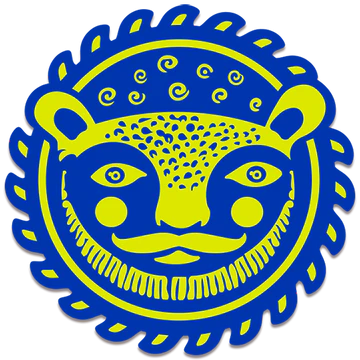
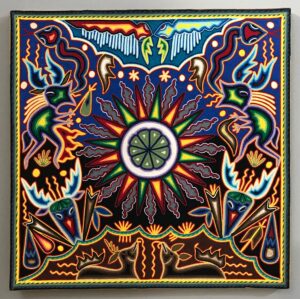

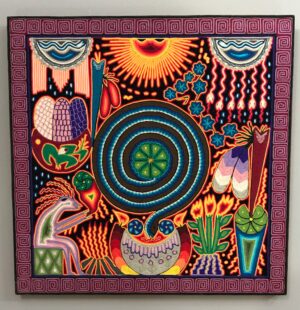
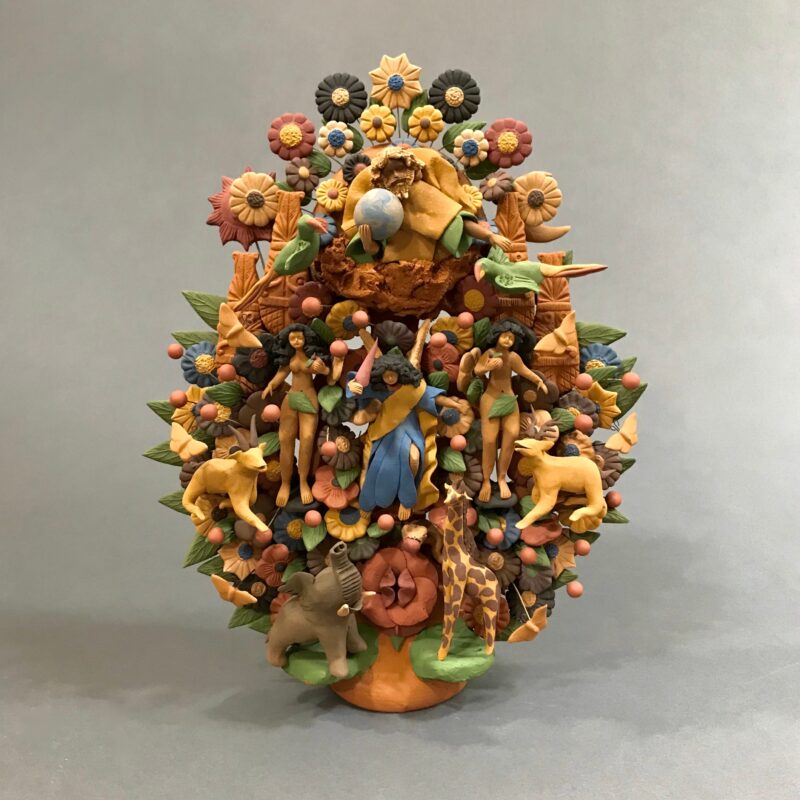
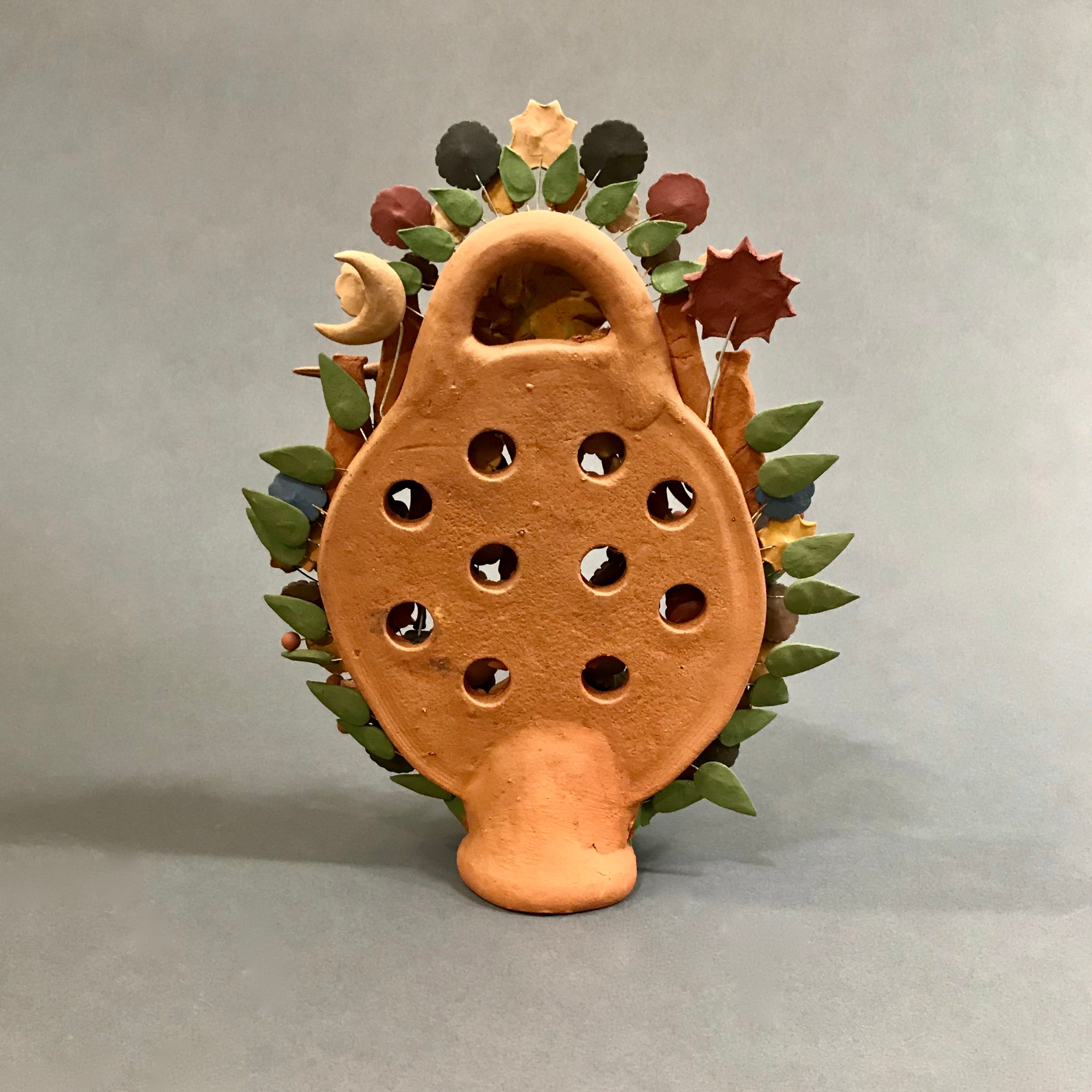




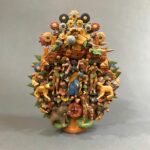
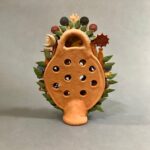
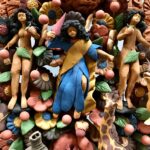
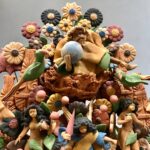
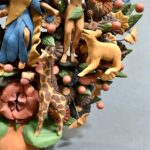
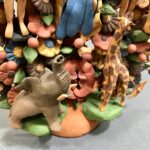
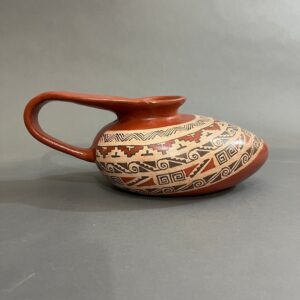
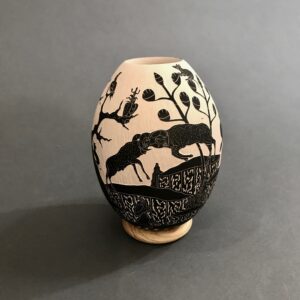
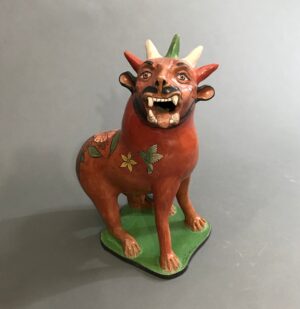
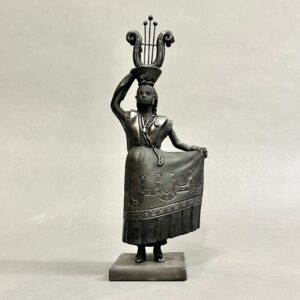
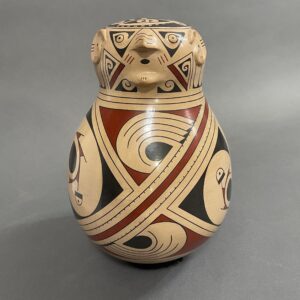
Reviews
There are no reviews yet.